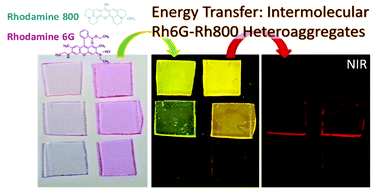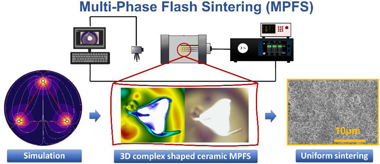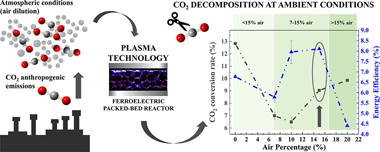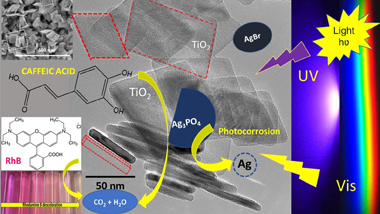Artículos SCI
2022
2022
Nanotecnología en Superficies y Plasma
Rhodamine 6G and 800 intermolecular heteroaggregates embedded in PMMA for near-infrared wavelength shifting
Castillo-Seoane, J; Gonzalez-García, L; Obrero-Pérez, JM; Aparicio, FJ; Borras, A; Gonzalez-Elipe, AR; Barranco, A; Sanchez-Valencia, JRJournal of Materials Chemistry C, 10 (2022) 7119-7131
Show abstract ▽

The opto-electronic properties of small-molecules and functional dyes usually differ when incorporated into solid matrices with respect to their isolated form due to an aggregation phenomenon that alters their optical and fluorescent properties. These spectroscopic modifications are studied in the framework of the exciton theory of aggregates, which has been extensively applied in the literature for the study of molecular aggregates of the same type of molecules (homoaggregation). Despite the demonstrated potential of the control of the heteroaggregation process (aggregation of different types of molecules), most of the reported works are devoted to intramolecular aggregates, complex molecules formed by several chromophores attached by organic linkers. The intramolecular aggregates are specifically designed to hold a certain molecular structure that, on the basis of the exciton theory, modifies their optical and fluorescent properties with respect to the isolated chromophores that form the molecule. The present article describes in detail the incorporation of Rhodamine 6G (Rh6G) and 800 (Rh800) into polymeric matrices of poly-(methyl methacrylate), PMMA. The simultaneous incorporation of both dyes results in an enhanced fluorescent emission in the near-infrared (NIR), originating from the formation of ground-state Rh6G-Rh800 intermolecular heteroaggregates. The systematic control of the concentration of both rhodamines provides a model system for the elucidation of the heteroaggregate formation. The efficient energy transfer between Rh6G and Rh800 molecules can be used as wavelength shifters to convert effectively the light from visible to NIR, a very convenient wavelength range for many practical applications which make use of inexpensive commercial detectors and systems.
Marzo, 2022 | DOI: 10.1039/d1tc06167d
Reactividad de Sólidos
A novel Multi-Phase Flash Sintering (MPFS) technique for 3D complex-shaped ceramics
Molina-Molina, S; Gil-Gonzalez, E; Duran-Olivencia, FJ; Valverde, JM; Perejon, A; Sanchez-Jimenez, PE; Pérez-Maqueda, LAApplied Materials Today, 26 (2022) 101274
Show abstract ▽

This work demonstrates the first proof-of-concept of Multi-Phase Flash Sintering (MPFS). This novel technique essentially consists of applying a rotating electric field to the sample by means of a multi-phase voltage source as furnace temperature increases. Several ceramic materials with different types of electrical conductivities are sintered within seconds at furnace temperatures much lower than those used for traditional DC flash sintering due to the higher power densities administered by a multi-phase power supply. Thus, ceramic materials are flashed at relatively lower applied voltages which minimizes undesired phenomena such as localization and preferential current pathways. Furthermore, MPFS allows diverse electrode configurations to promote a more uniform electric field distribution, enhancing the sintering of 3D complex-shaped specimens. MPFS could be a true breakthrough in materials processing, as 3D complex-shaped specimens are homogeneously sintered at reduced temperatures, while keeping all the advantages of conventional flash sintering.
Marzo, 2022 | DOI: 10.1016/j.apmt.2021.101274
Nanotecnología en Superficies y Plasma
Plasma assisted CO2 dissociation in pure and gas mixture streams with a ferroelectric packed-bed reactor in ambient conditions
Navascues, P; Cotrino, J; Gonzalez-Elipe, AR; Gomez-Ramirez, AChemical Engineering Journal, 430 (2022) 133066
Show abstract ▽

Carbon dioxide decomposition is a challenging target to combat climate change. Nonthermal plasmas are advantageous for this purpose because they operate at ambient conditions and can be easily scaled-up. In this study, we attempt the CO2 splitting into CO and O-2 in a parallel plate packed-bed plasma reactor moderated with Lead Zirconate Titanate (PZT) as fermelectric component, achieving conversion rates and energy efficiencies higher than those obtained with BaTiO3 in our experimental device. The analysis of the reaction mechanisms with optical emission spectroscopy under various operating conditions has shown a direct correlation between energy efficiency and intensity of CO* emission bands. These results and those obtained with a LiNbO3 plate placed onto the active electrode suggest that high temperature electrons contribute to the splitting of CO2 through an enhancement in the formation of CO2+ intermediate species. Results obtained for CO2 + O-2 mixtures confirm this view and suggest that back recombination processes involving CO and O-2 may reduce the overall splitting efficiency. The study of mixtures of CO2 and dry air has proved the capacity of fermelectric packed-bed reactors to efficiently decompose CO2 with no formation of harmful NxOy subproducts in conditions close to those in real facilities. The found enhancement in energy efficiency with respect to that found for the pure gas decomposition supports that new reaction pathways involving nitrogen molecules are contributing to the dissociation reaction. We conclude that PZT moderated packed-bed plasma reactors is an optimum alternative for the decompositon of CO2 in real gas flows and ambient conditions.
Febrero, 2022 | DOI: 10.1016/j.cej.2021.133066
Fotocatálisis Heterogénea: Aplicaciones
Exploring the photocatalytic activities of a highly {0 0 1} faceted TiO2 sensitized by coupling with AgBr or Ag3PO4
F.Puga; J.A.Navío; M.A.Paulete-Romero; J.M.Córdoba; M.C.HidalgoMaterials Science and Engineering: B, 276 (2022) 115555
Show abstract ▽

TiO2 with high {0 0 1} facet exposure was coupled with AgBr or Ag3PO4. Catalysts were widely characterized and tested with rhodamine B (RhB) or caffeic acid under UV and visible light. Combination of the used sensitizer (AgBr or Ag3PO4) with TiO2, not only enhances the high photocatalytic activity shown in the UV for TiO2, but it also largely increases the degradation activity under visible illumination. A synergistic effect toward photocatalytic degradation in the visible light was observed when coupling AgBr and TiO2, with the photocatalytic degradation profiles being strongly related to the molar percentages of the coupled materials and to the nature of the contaminant. The recycling of the coupled materials allows us to conclude that the AgBr(50%)/TiO2 sample presents better results in the consecutive reuse cycles and percentages of RhB dye mineralization, in contrast to those observed for the Ag3PO4(50%)/TiO2 composite.
Febrero, 2022 | DOI: 10.1016/j.mseb.2021.115555
Reactividad de Sólidos
Predictions of polymer thermal degradation: relevance of selecting the proper kinetic model
Sanchez-Jimenez, PE; Perejon, A; Arcenegui-Troya, J; Perez-Maqueda, LAJournal of Thermal Analysis and Calorimetry, 147 (2022) 2335-2341
Show abstract ▽
Making predictions, such as lifetime estimations, is one of the main objectives of kinetic studies. Thus, from conventional thermal analysis experiments, the behavior of polymeric materials under processing or application conditions, usually far away from those used in the laboratory experiments, could be estimated. Conventional prediction procedures usually make use of oversimplified equations based on simple approaches. One of the most common approaches is the assumption of a first, or n-order, kinetic model for the process. However, recent studies have shown, for a number of polymers, that random scission kinetic models are not only physically sound, but more reliable in terms of describing the degradation kinetics. In this paper, the consequences of selecting an erroneous kinetic model on lifetime predictions is discussed. It is demonstrated, using both simulated and experimental data, that any kinetic analysis of a chain scission driven reaction performed assuming a first-order model entails enormous deviations in predictions. This occurs despite the fact that the first-order kinetic model can fit experimental data from chain scission driven reactions with significant correlation coefficients, and even lead to a reasonably good reconstruction of the original experimental curves.
Febrero, 2022 | DOI: 10.1007/s10973-021-10649-x
- ‹ anterior
- 57 of 410
- siguiente ›














